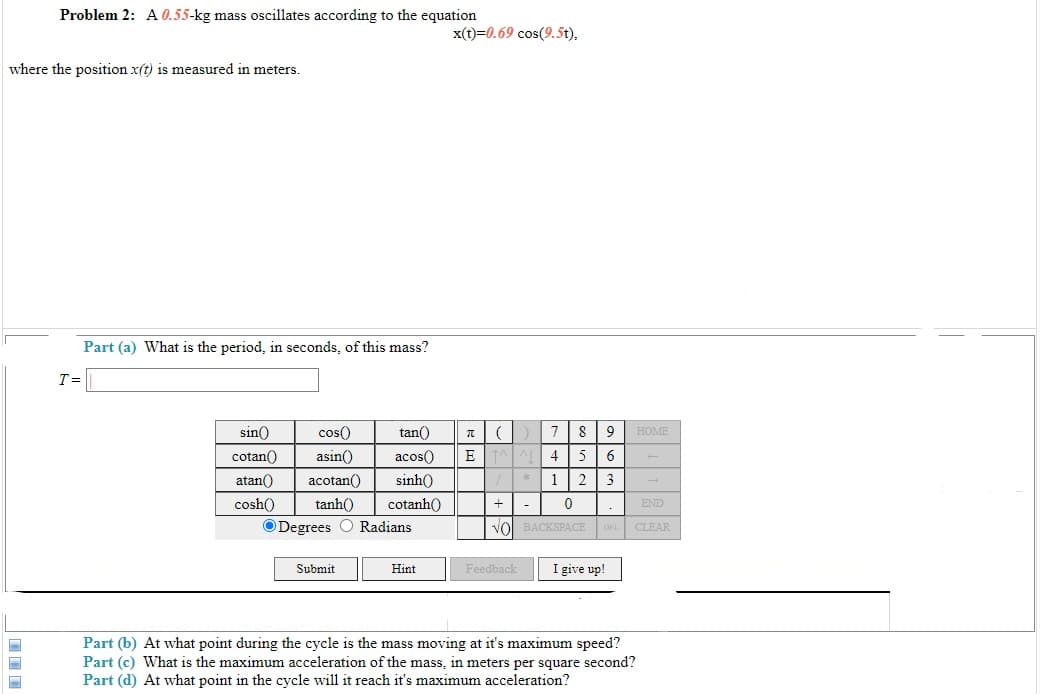Problem 2: A 0.55-kg mass oscillates according to the equation x(t)=0.69 cos(9.5t), where the position x(t) is measured in meters. Part (a) What is the period, in seconds, of this mass? T= sin() cos() tan() 7 9 HOME cotan() asin() acos() 4 5 6 atan() acotan() sinh() 1 3 cosh() tanh() ODegrees O Radians cotanh() END Vol BACKSPACE CLEAR Submit Hint Feedback I give up! Part (b) At what point during the cycle is the mass moving at it's maximum speed? Part (c) What is the maximum acceleration of the mass, in meters per square second?
Problem 2: A 0.55-kg mass oscillates according to the equation x(t)=0.69 cos(9.5t), where the position x(t) is measured in meters. Part (a) What is the period, in seconds, of this mass? T= sin() cos() tan() 7 9 HOME cotan() asin() acos() 4 5 6 atan() acotan() sinh() 1 3 cosh() tanh() ODegrees O Radians cotanh() END Vol BACKSPACE CLEAR Submit Hint Feedback I give up! Part (b) At what point during the cycle is the mass moving at it's maximum speed? Part (c) What is the maximum acceleration of the mass, in meters per square second?
Related questions
Question

Transcribed Image Text:Problem 2: A 0.55-kg mass oscillates according to the equation
x(t)=0.69 cos(9.5t),
where the position x(t) is measured in meters.
Part (a) What is the period, in seconds, of this mass?
T=
sin()
cos()
tan()
9
HOME
cotan()
asin()
acos()
E
4 5
atan()
acotan()
sinh()
* 1| 2 3
+| -
vol BACKSPACE DEL CLEAR
cosh()
tanh()
cotanh()
END
ODegrees O Radians
Submit
Hint
Feedback
I give up!
Part (b) At what point during the cycle is the mass moving at it's maximum speed?
Part (c) What is the maximum acceleration of the mass, in meters per square second?
Part (d) At what point in the cycle will it reach it's maximum acceleration?
Expert Solution
This question has been solved!
Explore an expertly crafted, step-by-step solution for a thorough understanding of key concepts.
This is a popular solution!
Trending now
This is a popular solution!
Step by step
Solved in 2 steps with 2 images
